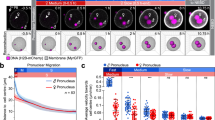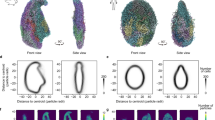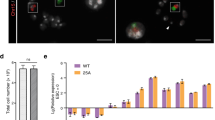Abstract
THE paternal component of the genome has been localised in the nuclear chromatin of early cleaving mouse eggs1 by autoradiography following the mating of normal females with males in which the spermatogonial cell line was labelled in vivo with tritiated thymidine (3H-TdR). The results indicated that in at least the earliest developmental stages of the mouse zygote there is a separation of maternal and paternal chromatin. This extends to mammals the concept of gonomery well known in lower animals2. The interpretation of these findings, as well as further exploitation of this experimental system, relies on the distribution of paternal labelled chromosomes at metaphase in early cleavage. An expected separation into twenty labelled and twenty unlabelled chromosomes is most unlikely to occur by chance. Here we present an analysis of the distribution pattern of the labelling in chromosomes.
This is a preview of subscription content, access via your institution
Access options
Subscribe to this journal
Receive 51 print issues and online access
$199.00 per year
only $3.90 per issue
Buy this article
- Purchase on SpringerLink
- Instant access to full article PDF
Prices may be subject to local taxes which are calculated during checkout
Similar content being viewed by others
References
Odartchenko, N., and Keneklis, T. P., Nature, 241, 528 (1973).
Wilson, E. B., in The Cell in Development and Heredity, 431 (Macmillan, New York, 1940).
Tarkowski, A. K., Cytogenetics, 5, 394 (1966).
Odartchenko, N., and Pavillard, M., Science, N.Y., 167, 1133 (1970).
Author information
Authors and Affiliations
Rights and permissions
About this article
Cite this article
KENEKLIS, T., ODARTCHENKO, N. Autoradiographic Visualisation of Paternal Chromosomes in Mouse Eggs. Nature 247, 215–216 (1974). https://doi.org/10.1038/247215a0
Received:
Revised:
Issue date:
DOI: https://doi.org/10.1038/247215a0



